Currently, automation technologies are quite widely used and continuing to develop. Automated lighting systems are being built based on many components: controllers, expansion modules, control panels and various sensors [1]. The hardware base can vary depending on the automation tasks, budget, location features and design of the object.
Development of an energy-saving automated lighting system for administrative buildings.
Hardware base of automation systems
At the heart of the system is most often the head controller, which controls all processes. It can be implemented as a controller program or on the basis of a separate device, for example, a netbook.
Program AlphaSE Controller
AlphaSE Controller is a controller program designed to automate apartments, houses, administrative buildings, build Automatic Process Control Systems and Automatic Meter Reading systems. This program allows you to control the expansion modules, according to the algorithm laid down by the user [2].
AlphaSE Controller is compatible with equipment running on ADNet+, ModBus RTU 9600 protocols (fig. 1).
Central controller of the home automation system and intelligent buildings with a built-in Web interface. Designed to control the expansion modules according to the program embedded in it. The built-in web server allows you to control the system remotely, incl. using smartphones, tablets and workstations. The controller is ideal for automation of lighting, climate, monitoring of engineering systems.
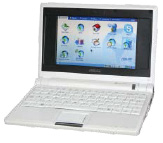
Fig. 1. Win Alpha SE controller for modbus, ADNet module management
The controller is built on the basis of a netbook with installed and configured software of the company SMART ELECTRONICS [3].
The next link in the lighting system are the input-output modules (Fig. 2). They are the interface between the head controller and the real world. Functionally designed to receive and process discrete signals and transmit them to a common bus via a specified protocol after the control signal.
The SE 6i4o expansion module is designed to work as part of home automation systems or smart buildings running on the ADNet+ and ModBus RTU protocols. The module is designed to supplement the system with 6 universal inputs and 5 relay outputs.
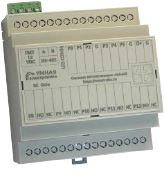
Fig. 2. I/O module SE 6i4o
The ability to specify a dependency between the inputs and outputs of the module allows you to use it to control lighting. In addition, any of the inputs can be used as a pulse counter. This function is useful for reading the readings of water, gas, electricity meters.
If there are LED strips in the lighting system, then their control can be organized with the help of special modules.
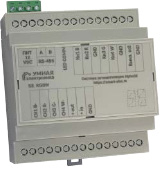
Fig. 3. SE RGBW burglar alarm module
The SE RGBW expansion module (Fig. 3) is designed to work as part of home automation systems or smart buildings operating on the ADNet+ and ModBus RTU protocols. The module is designed to supplement the system with 4 dimmable LED lighting groups (12/24VDC). When working with Yandex Alice, the module can be configured in the following variants:
·4 independent single color groups
·one RGB strip and one single-color tape;
When working through the AlphaSE controller, the module can operate in 3 modes:
·4 independent single-color groups;
·one RGB strip and one single-color tape;
·one RGBW tape;
Adjustment of the brightness of the glow of the lighting groups can be made using push-button switches and controller commands.
When creating a lighting system for a house or building, it is rational to use specialized modules similar to SE OfficeLight (Fig. 4), SE HotelRoom (Fig. 5), RoomBlock (Fig. 6).
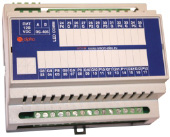
Fig. 4. SE OfficeLight I/O Module
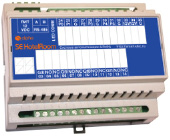
Fig. 5. Hotel Room Control Module SE HotelRoom
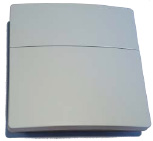
Fig. 6. SE RoomBlock I/O Module
The SE OfficeLight4 expansion module is designed to work as part of home automation systems and smart buildings running on the ADNet+ and ModBus RTU protocols. The module is designed to control 4 groups of lighting using switches and motion sensors.
Lighting control is carried out according to one of the 3 specified logics of work.
Logic of the “Corridor” work
-the lighting turns on when motion is detected by any of the sensors;
-the lighting turns off in the absence of movement for 1-255 minutes.
Logic of the “Cabinet” work
-the lighting is turned on only by the switch;
-the lighting is turned off by a switch and in the absence of movement for 30-255 minutes.
Logic of the work “Utility room”
-the lighting is turned on only by the switch;
-the lighting is turned off by a switch or after 30-255 minutes. depending on which comes first. No motion sensors are required.
The SE HotelRoom expansion module is designed to work as part of home automation systems or smart buildings running on the ADNet+ and ModBus RTU protocols. The module is designed to control various sensors of the hotel room and control the relay of room power.
Logic of work
SE HotelRoom has inputs for connecting sensors for opening, window breaking, movement, water leakage and a card receiver. The output relays of the module allow you to control the power supply of the room and the climatic equipment. All input/output status data can be obtained by the system’s central controller (Win Alpha SE or similar).
When the “cardholder” entry is opened (the card is withdrawn), the number power relay and the control of the climatic equipment are turned off. The delay time is set by the corresponding module parameter. When the input is closed, both relays are turned on within 1 second.
When the “window opening sensor” is opened, the climate control relay is turned off. The delay time is 1 minute. When the input is closed, both relays are turned on within 1 second.
The module automatically keeps track of the time spent by people in the room, analyzing signals from the motion sensor. This makes it possible to detect illegal occupancy of rooms by hotel staff. For example, the room is listed as uninhabited, but during the day people were in it for more than 4 hours. In this case, the central controller can send a letter to the owner or the security service about a possible violation.
I/O module with 4 discrete inputs (dry contact) and 4 relay outputs with RS-485 interface (ADNet, ModBus RTU). Switches, motion sensors, glass breakers, leakage, reed switches, etc. can be connected to the module inputs.
The module is designed for remote control of various power loads and control of various types of signals. Control is carried out by switching relay outputs both from the input signals of sensors and other devices, and by controller commands via the RS-485 bus.
Functional:
The ability to specify a dependency between the inputs and outputs of the module allows you to use it to control lighting.
When connecting the temperature/humidity sensor AM2302, the module can be used to adjust the measured parameters.
Any of the inputs can be used as a pulse counter. This function is useful for reading the readings of water, gas, electricity meters.
To recognize movement in a corridor or room, it is necessary to use motion sensors. For such purposes, optoelectronic solutions are best suited.
One of the most effective options is the Astra-7 infrared sensor (Fig. 7).
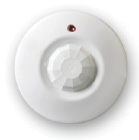
Fig. 7. Astra-7 Spanish A (IO 409-15A)
Optical-electronic volumetric security detector. IR volumetric ceiling, installation height 2.4... 3.6 m, viewing angle 360°, Ø zone 9m (at a height of 3.6 m), 2-platform PIR, thermal compensation, “alarm memory” mode, tamper, U-pit. 8... 15V, I-potr. 15mA, IP41, trab.-30...+50°С, gab.dimensions Ø91x31 mm.
System personalization
The modules and systems described in the work are standard for these types of buildings and structures. At the same time, the energy-efficient lighting system of the module I offer for the automation of the DSTU dormitory building will have the same algorithms as in SE officeLight, but it will be implemented for the SE 6i4o board.
When creating a lighting control system in the dormitory, the MODULE SE 6i4o will be used. At the same time, the light in the kitchen will be controlled from both the switch and the motion sensor. In the shower room – only from the switch with automatic shutdown after 30 minutes. In the toilet and corridor – only from switches with automatic shutdown after 30 minutes [4]. TheSE module 6i4o has six entrances. We have four switches and one motion sensor connected to them. That is, it turns out to be only five per entrance. And four relays for lighting devices will be connected to the outputs.
Due to the fact that the SE 6i4o module has two fewer inputs than OfficeLight, we will not control outputs 10-11 using motion sensors. That will reduce the cost and increase the efficiency of the system [5].
Total
An automated lighting control system built in the right way will help to efficiently consume electricity and provide comfortable conditions for work, study and rest in the building [6]. Therefore, to create a system, an individual and professional approach is needed, taking into account all the nuances of the climate, architectural features and requirements for the operation of this system.

